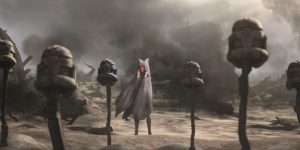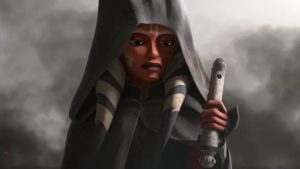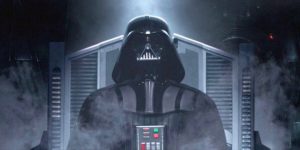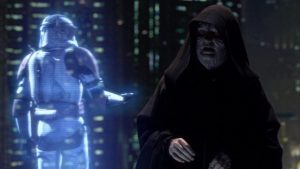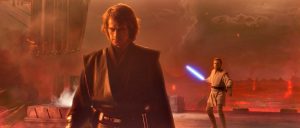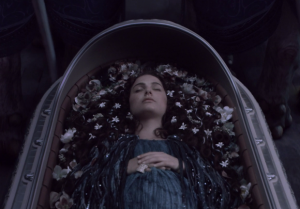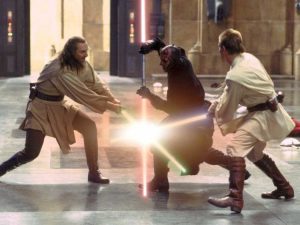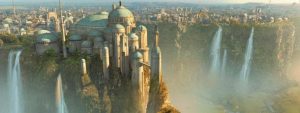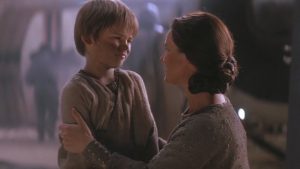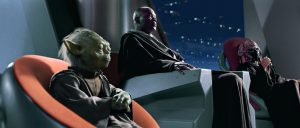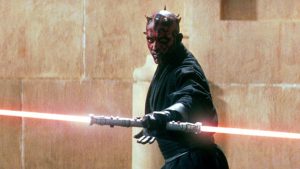Lego’s holiday-themed parody of the Star Wars universe probably won’t become a cult classic like its predecessor, the notoriously unwatchable Holiday Special that aired in 1978, but…that’s probably okay. Lego’s Holiday Special is a brief, hilarious, and surprisingly action-packed story that takes us further forward into the Star Wars timeline (albeit, non-canonical and made out of animated building blocks) than ever before, and all the way back to its beginnings in the prequel trilogy, in a charming mini-adventure that allows characters from every trilogy (and even some of the expanded material) to interact, duel, or share memorable moments together. In so doing, the Special also very gently (and in some ways imperfectly) fixes some of the biggest problems that fans have pointed out about The Rise Of Skywalker, which is one of those movies that I’ll probably always have an irrational soft spot for, but definitely don’t feel as positively about now as I did when it came out.

The Special takes place soon after the end of The Rise Of Skywalker, during the Star Wars universe’s “Life Day” – an all-inclusive holiday that has existed on the peripheries of Star Wars canon since the original Holiday Special. In all that time, however, no one behind the scenes has done anything to sketch out the in-universe customs or traditions of Life Day, and so it still just borrows most of the standard trappings of Christmas anyway: the decorated tree, the lights, gift-giving, ugly sweaters. The Special’s setting on Chewbacca’s homeworld of Kashyyk is another throwback to the original Special, which centered around Chewbacca’s family on Kashyyk (and, side-note, also introduced the world to the Mandalorian bounty hunter Boba Fett). But Wookiees are less crucial to the overall plot in Lego’s version than they were in the original: most of the action revolves around a time-hopping quest to learn forgotten Jedi secrets.
Early on we find out that, in this timeline, Rey (voiced by Helen Sadler) has started mentoring her best friend Finn (Omar Miller) in the ways of the Force, and her apprentice has already begun training with a lightsaber, using the same time-honored methods as countless Jedi padawans before him – a natural part of his character arc that many of us hoped we’d get to see in live-action. Sadly, the Star Wars films mishandled and mistreated Finn’s character: only revealing him to be Force-sensitive after The Rise Of Skywalker‘s release, not unlike dozens of other crucial bits of plot information that were vaguely alluded to in the movie itself and then later confirmed by people behind-the-scenes or by tie-in material. Lego certainly tries to right that wrong by making Finn visibly (though non-canonically) Force-sensitive, but it still makes the same egregious mistake that the films did – by sidelining him, and all of the franchise’s living characters of color to a side-quest (better described as decorating duty and cooking, in this case) while Rey and BB-8 get to go on the actual adventure. And even though that adventure gives Rey plenty of opportunities to cross paths with characters like Mace Windu or a younger Lando Calrissian, both prominent and beloved Black Star Wars heroes, those encounters don’t happen (Mace Windu is present in the background, but never speaks). It’s simply unforgivable that Finn, at the very least, doesn’t get to participate in the action – his Force powers come in handy just once, and well…it’s not quite as epic as one would hope.
On the bright side, it is great to be able to welcome Kelly Marie Tran back to Star Wars as Rose Tico, after her character was treated so horribly by the franchise. Tran will soon be getting even more attention and recognition for her voice-acting talents with the upcoming release of Disney’s Raya And The Last Dragon, where she voices the film’s heroine, Raya. It would be hard to determine anything about her performance in that role from the cameo she has here, however – especially since, for some reason, it seems like every other line she delivers is “are you crying?”, while Poe (voiced by Jake Green), visibly in tears, tries to pass it off as allergies. Other notable Star Wars actors reprising their roles include Anthony Daniels as C-3PO, Billy Dee Williams as Lando, Matt Lanter as Anakin Skywalker, and James Arnold Taylor as Obi-Wan Kenobi.
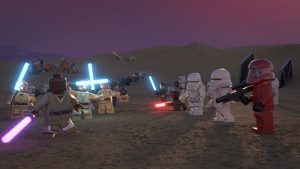
Rey, meanwhile, discovers a magical Jedi gemstone that allows her to travel through time – a nod to the World Between Worlds, a mystical location outside of space and time that was first explored in Star Wars: Rebels, but never really reappeared until now…sort of. Rey’s misadventures start out slow, with her basically just listening in on conversations between various Jedi master/apprentice duos – going all the way back to her master’s father’s master and his master before him. But once she meets Darth Vader (voiced by Matt Sloan) and Emperor Palpatine (voiced by Trevor Devall), the action picks up and hilarity ensues. The duel between Vader and Rey has been one of the most hyped-up events in this Holiday Special, and luckily it does not disappoint: in fact, it takes place across several different planets, in several different eras, and eventually grows to become an all-out battle on Luke Skywalker’s farm back on Tatooine, involving three different Obi-Wan Kenobi’s, at least two Han Solo’s (and one Greedo), pod-racers, a bunch of very confused stormtroopers, and a legless (but no less fearsome) Darth Maul, among others. Baby Yoda is even featured, and neither Rey nor Darth Vader can resist pausing their fight to adore the infant alien – who is apparently just as much of a celebrity in-universe as he is in real-life.
But where the Special really hits its peak is when it unites Vader, Palpatine, and the First Order’s Supreme Leader Kylo Ren (voiced by Matthew Wood), after the Emperor decides to time-travel to the future and see what he’s managed to accomplish. Sure, it’s not a bizarre musical number by Jefferson Starship (yes, that really happened in the original), but for all the grumbling from Palpatine about “less talky-talky, more fighty-fighty”, the intensely awkward comedic interactions between Kylo and his Dark Side predecessors are the highlight of the entire Special and culminate in a dramatic shake-up of the Sith power structure – and some fabulous one-liners and sight gags. Fans of the Reylo romantic pairing, however, might be disappointed that Rey and Kylo don’t share many scenes – and when they do, the Holiday Special makes some…interesting choices regarding their dynamic, that are sure to have Star Wars Twitter in a bit of a frenzy. No spoilers here, though.
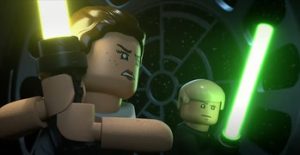
All in all, the Lego Holiday Special basically achieves what the original Special probably intended – and failed – to accomplish: which is to just be harmless fun for the whole family. It’s ironic, then, that the original’s failure to do that has given it a staying power it never should have had, but will continue to enjoy – probably until Disney releases it on Disney+ eventually, and it becomes that week’s most popular hate-watch before finally being allowed to rest in peace.
Rating: 7/10

